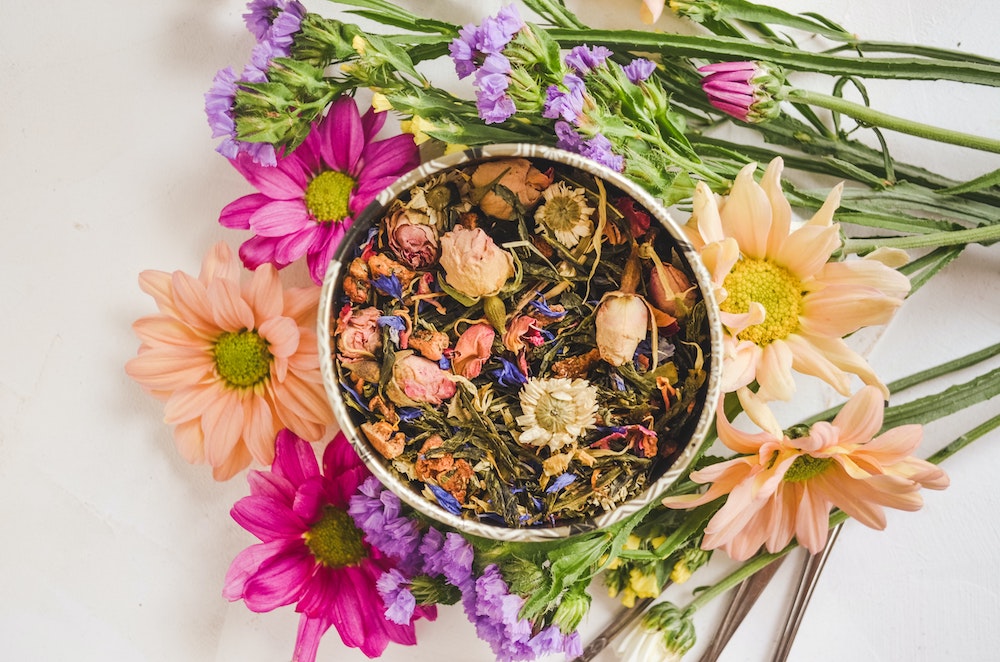ayurveda 101

the knowledge of life!
Ayurveda 101 | You may have heard the term ‘Ayurveda’ while at your local yoga studio, scrolling through social media, reading your favorite wellness blog or shopping at your neighborhood natural food store.
Maybe you gathered that Ayurveda is from India and seems to have something to do with healthy living but you’re still not sure what all the hype is about.
Well, fret not, because in this post we cover a brief history of Ayurveda and explain what this ancient science is all about.
Who knows? By the end, you may even feel inspired to integrate a little Ayurveda into your daily life.
A History of Ayurveda
The name Ayurveda is a combination of two Sanskrit words: ‘ayus,’ which means life, and ‘veda,’ which means knowledge.
Ayurveda is the knowledge of life and is considered the sister science of yoga. It has been studied, practiced and shared throughout India for over 5,000 years.
It is the traditional medical system of India and is still practiced there today.
Ayurveda’s story begins with the ancient Indian sages.
After observing illness and suffering in the villages, the sages decided to gather in the Himalayas to meditate and discuss what could be done to help heal the people and keep them free from disease.
They decided that Bharadvaja would approach the deity Indra (a respected Hindu deity), to seek answers.
So off Bharadvaja went, on his journey to commune with Lord Indra, and the answer he received was Ayurveda.
Indra imparted this knowledge of life to Bharadvaja, and Bharadvaja returned to the Himalayas and taught the sages all he had learned.
From there, the science of Ayurveda spread, from village to village, generation to generation and, most recently, from the east to the west.
Ayurveda 101, a Holistic Science
Ayurveda is a holistic science, meaning that, rather than focusing solely on the physical symptoms of a disease, it also examines the mental, emotional and spiritual factors that affect wellbeing.
When working with an Ayurvedic doctor or practitioner, a treatment plan will always begin with an effort to balance the five senses, an approach espoused by the Vedic sages. Deepak Chopra explains,
“…the sages of India understood what quantum physicists are just beginning to recognize: we are all part of an infinite field of intelligence that orchestrates all of the activities in the universe. With every breath, we exchange our personal energy with the energy of the universe, and we are constantly taking in impressions via the five sense organs—the ears, skin, eyes, tongue, and nose”.
 (1).jpg)
Credit Taj images
Everything we bring into our body, be it food, information, music, color and/or aromas, they all contribute to either balance (health) or imbalance (disease).
When we begin to tune into the fact that our senses and the world surrounding us inform our well-being, it is easy to see how important daily routines and awareness are for balanced health.
The 20 Attributes of All Matter
According to Ayurveda, all living matter is made up of a series of 20 attributes or qualities.
Any excess or deficiency in these qualities can lead to an imbalance in health, which only an opposing force can combat. The 20 attributes are:
- hot/cold
- moist/dry
- sharp/dull
- smooth/rough
- sharp/soft
- light/heavy
- subtle/gross
- clear/cloudy
- static/mobile
- soft/hard
We take in these attributes through our five senses in the form of taste, sight, smell, touch, and sound.
For example, if we’re searching for a clear radio station, but all we hear is muffled, static sound, we are experiencing cloudiness through our sense of sound.
If we’re sunbathing on the beaches of Rio de Janeiro on a sweltering summer day, we’re most likely feeling the heat through our skin and sense of touch.
Or, if we’re looking at a huge mountain lion instead of a newborn kitten, we are seeing a gross (large) form of a cat vs a subtle (small) form through our vision.
These random examples display how the twenty attributes make up all matter and how we take in these qualities through our five senses.
The Five Elements
Aside from the 20 attributes, Ayurveda also accounts for five elements: ether, air, fire, water & earth. Everything that is alive contains its own unique blend of these elements.
For example, a person with more fire within them will love to jump into a heated political debate at a cocktail party, whereas a person that is more air predominant will prefer to bounce around from conversation to conversation, keeping discussions light.
The five elements contain ten of the twenty attributes of all matter. Let’s look at air and water as an example:
- Air can be described as light, cold, dry, sharp, rough, clear, subtle, mobile and hard.
- Water is heavy, moist, soft, smooth, cloudy, flowing, gross, dense, static and cloudy.
- These two elements, air, and water have very different, opposing qualities; thus, a person with more air in their nature will be quite different compared to a person predominant in water.
That may manifest itself in different ways. For instance, the air predominant person may have the quality of lightness and have a difficult time gaining weight. Whereas the water predominant person may have a “heavy” personality and may have a hard time losing weight.
The 3 Doshas
Together, the five elements (ether, air, fire, water, and earth) combine to create three doshas: Vata, Pitta, and Kapha.
According to Ayurveda, the physiology of a human being is governed by these three main forces.
Ether and air make up the Vata dosha, fire and a little bit of water comprise the Pitta dosha, and water and earth create the Kapha Dosha.
Every person has all three doshas within them, but it’s the particular blend that makes us unique.
Most people are dual doshic, meaning two doshas are predominant, while others are ruled by one main dosha. Some people can have an equal balance of all three doshas and are considered tridoshic.
Vata Dosha
A vata type reflects the air and ether qualities in their physical, mental and emotional bodies.
A vata body is varied; sometimes it can present as thin and long-limbed, or it can be pear-shaped.
Commonly, vata types have difficulty gaining weight.
Their personality is restless, adventurous, dreamy, bubbly and charismatic.
The vata soul is creative, artistic and inspires others.
It is quite difficult to pin down a vata type person because their nature is inherently mobile (imagine trying to trap the wind).
They love movement and jump at the idea of trying new things.
The unofficial mascot of vata is a hummingbird or butterfly. They are always moving, fluttering from place to place.
To some, it may seem that vata types lack direction but to the vata person, that is exactly what makes them feel alive.
Pitta Dosha
A pitta type mirrors the qualities of fire and water in their physical, mental and emotional bodies.
Pitta manifests in the physical body through a medium frame and athletic build. Compared to a vata type, it is easy for pittas to maintain muscle tone.
They gain and lose weight easily. In the mind, pitta creates sharpness and intellect. Pittas are passionate and courageous natural born leaders. They communicate directly.
To some, their clear communication can come off as sharp or curt, however, pittas just feel like they are getting to the point.
They value organization and completion of tasks. When they are in balance, they have a beautiful blend of fire and water, that helps them inspire others to achieve their goals.
They display a powerful, compassionate nature.
The unofficial mascot of pitta is a lion. They are strong, powerful, demand attention and will protect their loved ones with fierce loyalty and love.
Ayurveda 101 – Kapha Dosha
Kapha dosha is the force of stability. Kaphas reflect earth and water in their physical, mental and emotional being.
A Kapha body is solid and sometimes stocky. It is very easy for Kapha types to gain weight and hard for them to lose it. They have large features: abundant hair, large eyes, and thick lips.
A Kapha personality is sweet, loving and loyal. They are the people at the party making sure everyone else is okay.
They’ll make sure your drink is full, you’ve eaten, and you’re not too hot or too cold. Kapha types are grounded, steady and enjoy routine.
The unofficial mascot of the kapha dosha is an elephant.
They move slowly, have open hearts and have a natural compassion for others.
Ayurveda 101 – Prakruti vs Vikruti
The underlying essential blend of the doshas is considered a person’s prakruti, while vikruti is the doshic current state.
As my beloved Ayurvedic teacher, Mary Thompson, once explained, everyone wants to know or find out what their prakruti, or true nature is; yet, this is not going to help bring balance to the vikruti, or the current state of the doshas.
When working with an Ayurvedic practitioner, specialist or doctor, the goal is to balance the vikruti to come back to prakruti, our true natural state.
Note, that it is not the goal for everyone to have the same balance of doshas, but for each of us to come back to the unique blend of the doshas that makes us feel whole, complete and balanced.
Ayurveda 101 – Discover Your Dosha
For thousands of years, Ayurveda has informed people how to live optimally and has helped individuals achieve spiritual and personal goals.
It is a complete science that looks at people as a whole rather than compartmentalizing diseases or ailments.
An Ayurvedic tenet is that what people take in through the five senses affects the doshas either in an optimal or less than optimal way.
Ayurveda challenges individuals to take control of personal health by beginning to tune into their senses and observe how their surroundings affect their wellbeing.
Ayurveda 101 To depart
Equally useful in the days of the ancient sages and Lord Indra, as it is today,
Ayurveda can be used as a guide to help each and every one of us live happy, healthy, bountiful lives.
To find out what is your dosha and how to stay in balance, visit PAAVANI Ayurveda.



